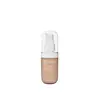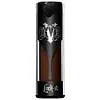What's inside
What's inside
 Key Ingredients
Key Ingredients

 Benefits
Benefits

 Concerns
Concerns

 Ingredients Side-by-side
Ingredients Side-by-side

Cyclomethicone
EmollientIsododecane
EmollientTrimethylsiloxysilicate
EmollientDimethicone
EmollientMagnesium Stearate
Cosmetic ColorantDimethicone Crosspolymer
Emulsion StabilisingLauryl PEG-10 Tris(Trimethylsiloxy)Silylethyl Dimethicone
EmulsifyingAluminum Starch Octenylsuccinate
AbsorbentTalc
AbrasiveKaolin
AbrasiveWater
Skin ConditioningGlycerin
HumectantSodium Chloride
MaskingDisodium EDTA
Phenoxyethanol
PreservativeCaprylyl Glycol
EmollientSilica
AbrasiveAluminum Dimyristate
Emulsion StabilisingTriethoxycaprylylsilane
Disodium Stearoyl Glutamate
CleansingCI 77499
Cosmetic ColorantCI 77492
Cosmetic ColorantCI 77491
Cosmetic ColorantCI 77288
Cosmetic ColorantCyclomethicone, Isododecane, Trimethylsiloxysilicate, Dimethicone, Magnesium Stearate, Dimethicone Crosspolymer, Lauryl PEG-10 Tris(Trimethylsiloxy)Silylethyl Dimethicone, Aluminum Starch Octenylsuccinate, Talc, Kaolin, Water, Glycerin, Sodium Chloride, Disodium EDTA, Phenoxyethanol, Caprylyl Glycol, Silica, Aluminum Dimyristate, Triethoxycaprylylsilane, Disodium Stearoyl Glutamate, CI 77499, CI 77492, CI 77491, CI 77288
Dimethicone
EmollientWater
Skin ConditioningPhenyl Trimethicone
Skin ConditioningTrimethylsiloxysilicate
EmollientPEG/PPG-18/18 Dimethicone
EmulsifyingAluminum Starch Octenylsuccinate
AbsorbentSilica Dimethicone Silylate
AbsorbentButylene Glycol
HumectantIsononyl Isononanoate
EmollientIsododecane
EmollientGlycerin
HumectantSodium Chloride
MaskingDimer Dilinoleyl Dimer Dilinoleate
EmollientGlyceryl Caprylate
EmollientMethicone
EmollientSorbitan Sesquioleate
EmulsifyingCI 77220
Cosmetic ColorantTrihydroxystearin
Skin ConditioningPolysilicone-11
Potassium Sorbate
PreservativeDimethicone Crosspolymer
Emulsion StabilisingMethylpropanediol
SolventTalc
AbrasiveDisodium EDTA
Caprylhydroxamic Acid
CI 77891
Cosmetic ColorantIron Oxides
Dimethicone, Water, Phenyl Trimethicone, Trimethylsiloxysilicate, PEG/PPG-18/18 Dimethicone, Aluminum Starch Octenylsuccinate, Silica Dimethicone Silylate, Butylene Glycol, Isononyl Isononanoate, Isododecane, Glycerin, Sodium Chloride, Dimer Dilinoleyl Dimer Dilinoleate, Glyceryl Caprylate, Methicone, Sorbitan Sesquioleate, CI 77220, Trihydroxystearin, Polysilicone-11, Potassium Sorbate, Dimethicone Crosspolymer, Methylpropanediol, Talc, Disodium EDTA, Caprylhydroxamic Acid, CI 77891, Iron Oxides
Ingredients Explained
These ingredients are found in both products.
Ingredients higher up in an ingredient list are typically present in a larger amount.
Aluminum Starch Octenylsuccinate is a synthetic powder used as an absorbent, thickener, and anti-caking agent.
As an absorbent, it is great at mattifying skin by soaking up the oil. This is why you'll find it in a range of products from makeup to moisturizers.
This ingredient is considered a modified starch. Starch can also be found naturally in plants.
One study from 1991 found that 5% of this ingredient enhanced titanium dioxide SPF by as much as 40%. The study found 1% titanium dioxide had a 5.6 SPF and adding 5% of aluminum starch octenylsuccinate boosted it to an SPF of 8.1
Although “aluminum” in an ingredient name can raise red flags for some consumers, the form and usage context matter significantly. For typical topical applications, there is no substantial evidence of health risks - such as cancer, neurotoxicity, or systemic “aluminum overload.”
Learn more about Aluminum Starch OctenylsuccinateDimethicone is a type of synthetic silicone created from natural materials such as quartz.
What it does:
Dimethicone comes in different viscosities:
Depending on the viscosity, dimethicone has different properties.
Ingredients lists don't always show which type is used, so we recommend reaching out to the brand if you have questions about the viscosity.
This ingredient is unlikely to cause irritation because it does not get absorbed into skin. However, people with silicone allergies should be careful about using this ingredient.
Note: Dimethicone may contribute to pilling. This is because it is not oil or water soluble, so pilling may occur when layered with products. When mixed with heavy oils in a formula, the outcome is also quite greasy.
Learn more about DimethiconeDimethicone Crosspolymer is a silicone created by modifying dimethicone with hydrocarbon side chains. Due to its large size, it does not penetrate skin. It is considered non-occlusive.
Dimethicone Crosspolymer is used to stabilize and thicken products. It also helps give products a silky feel.
Disodium EDTA plays a role in making products more stable by aiding other preservatives.
It is a chelating agent, meaning it neutralizes metal ions that may be found in a product.
Disodium EDTA is a salt of edetic acid and is found to be safe in cosmetic ingredients.
Learn more about Disodium EDTAGlycerin is already naturally found in your skin. It helps moisturize and protect your skin.
A study from 2016 found glycerin to be more effective as a humectant than AHAs and hyaluronic acid.
As a humectant, it helps the skin stay hydrated by pulling moisture to your skin. The low molecular weight of glycerin allows it to pull moisture into the deeper layers of your skin.
Hydrated skin improves your skin barrier; Your skin barrier helps protect against irritants and bacteria.
Glycerin has also been found to have antimicrobial and antiviral properties. Due to these properties, glycerin is often used in wound and burn treatments.
In cosmetics, glycerin is usually derived from plants such as soybean or palm. However, it can also be sourced from animals, such as tallow or animal fat.
This ingredient is organic, colorless, odorless, and non-toxic.
Glycerin is the name for this ingredient in American English. British English uses Glycerol/Glycerine.
Learn more about GlycerinIsododecane is a fragrance, emollient, and solvent.
As an emollient, it helps your skin stay soft and hydrated. Emollients help trap moisture into your skin.
Isododecane's role as a solvent makes it a great texture enhancer. It spreads smoothly on skin and does not leave a sticky feeling behind. Isododecane also helps prevent color transfer in makeup products.
Isododecane is not absorbed into skin.
Learn more about IsododecaneChances are, you eat sodium chloride every day. Sodium Chloride is also known as table salt.
This ingredient has many purposes in skincare: thickener, emulsifier, and exfoliator.
You'll most likely find this ingredient in cleansers where it is used to create a gel-like texture. As an emulsifier, it also prevents ingredients from separating.
There is much debate on whether this ingredient is comedogenic. The short answer - comedogenic ratings don't tell the whole story. Learn more about comegodenic ratings here.
The concensus about this ingredient causing acne seems to be divided. Research is needed to understand if this ingredient does cause acne.
Scrubs may use salt as the primary exfoliating ingredient.
Learn more about Sodium ChlorideTalc is a clay mineral. It helps absorb moisture and improve the texture of products. Like other types of clay, Talc can have a slight exfoliating effect on skin. Talc can be added to increase the volume of products.
Some Baby powders are made by combining talc with corn starch. The word "talc" comes from Latin and originates from Arabic. Talc is a mineral commonly found throughout the world.
If you have any concerns about using talc, we recommend checking out the FDA's official page.
Learn more about TalcThis silicone is an emollient. Emollients create a thin film on the skin to prevent moisture from escaping.
It is not soluble in water and helps increase water-resistance in products.
According to a manufacturer, it can blend seamlessly with silicone oils, such as Cyclopentasiloxane.
Learn more about TrimethylsiloxysilicateWater. It's the most common cosmetic ingredient of all. You'll usually see it at the top of ingredient lists, meaning that it makes up the largest part of the product.
So why is it so popular? Water most often acts as a solvent - this means that it helps dissolve other ingredients into the formulation.
You'll also recognize water as that liquid we all need to stay alive. If you see this, drink a glass of water. Stay hydrated!
Learn more about Water